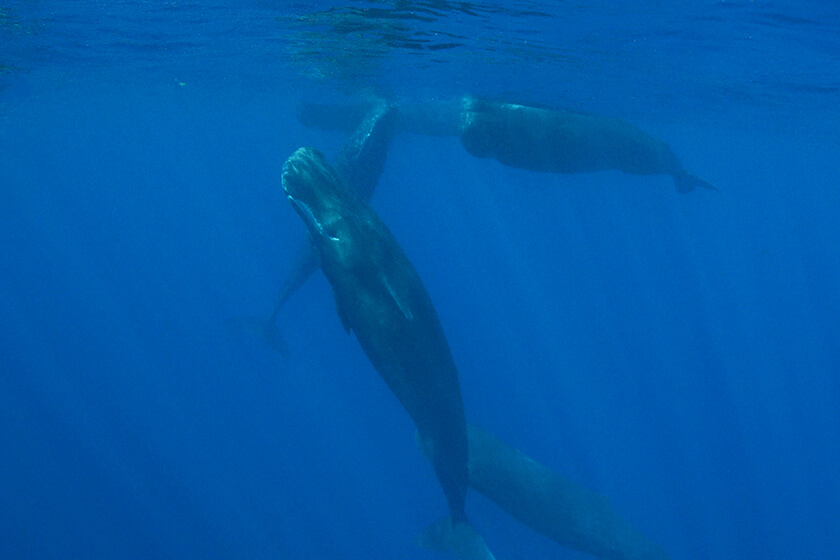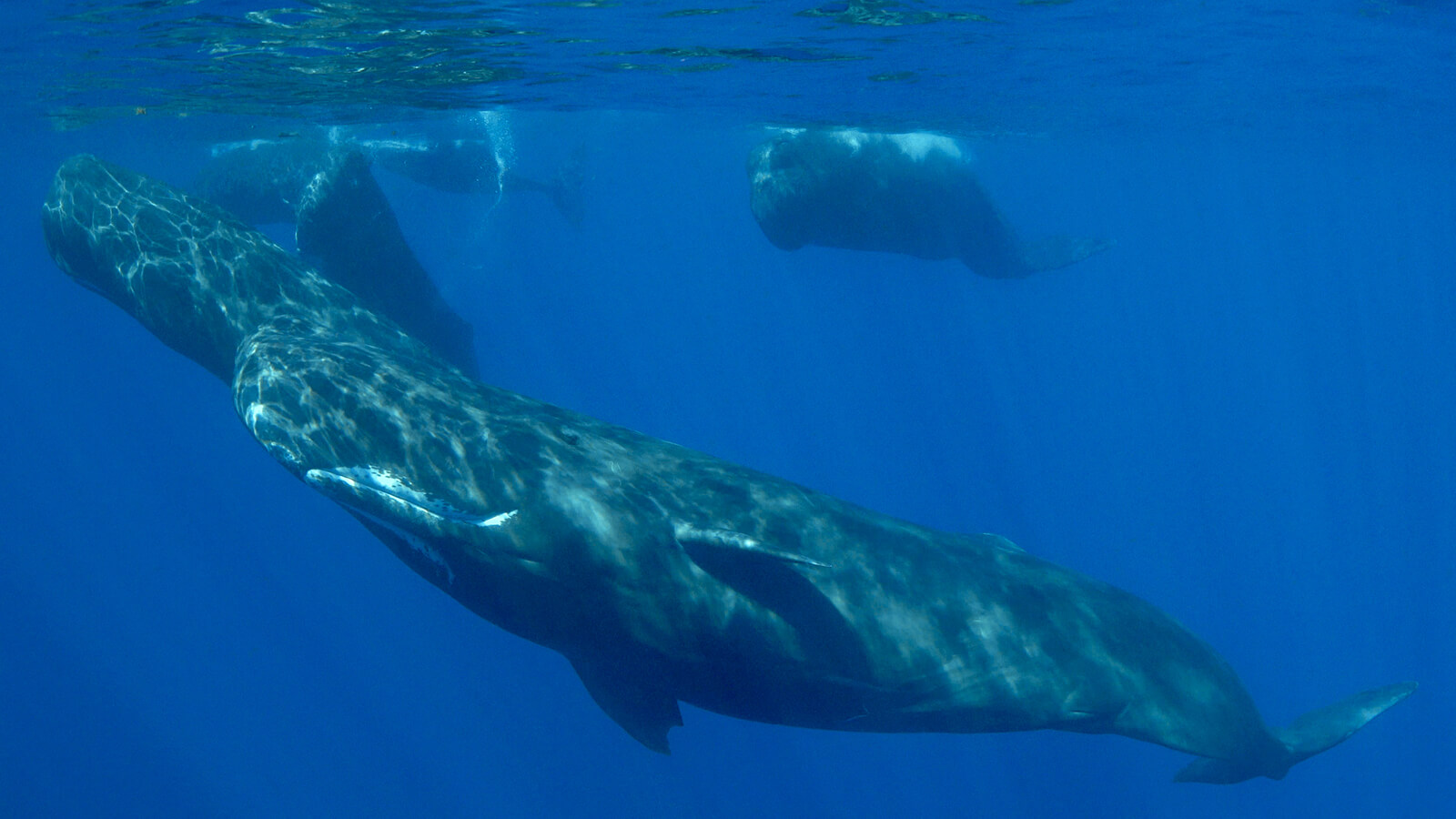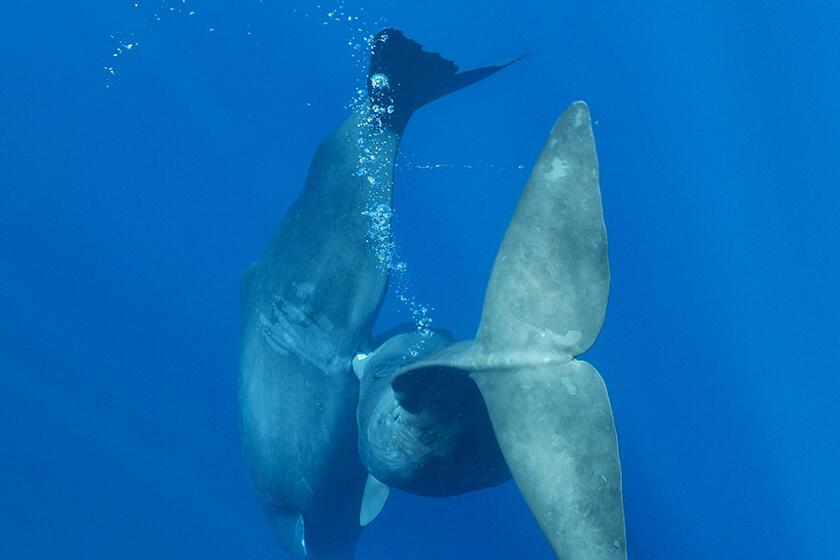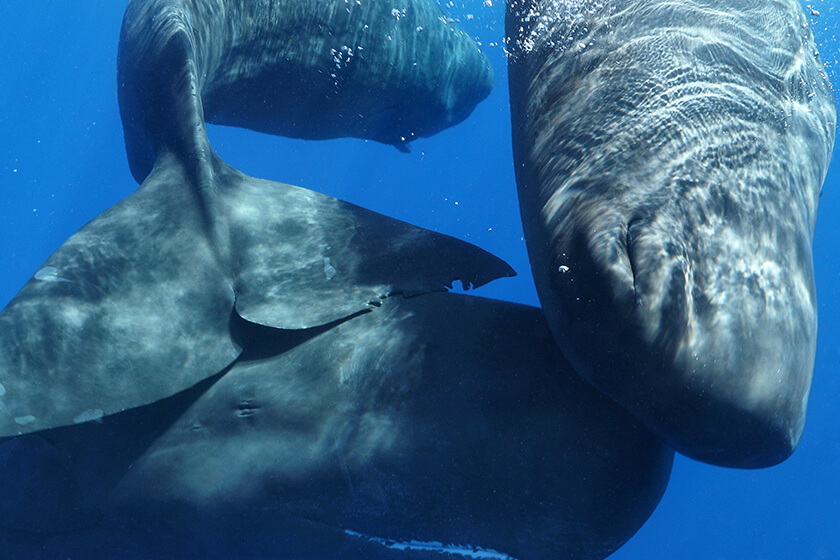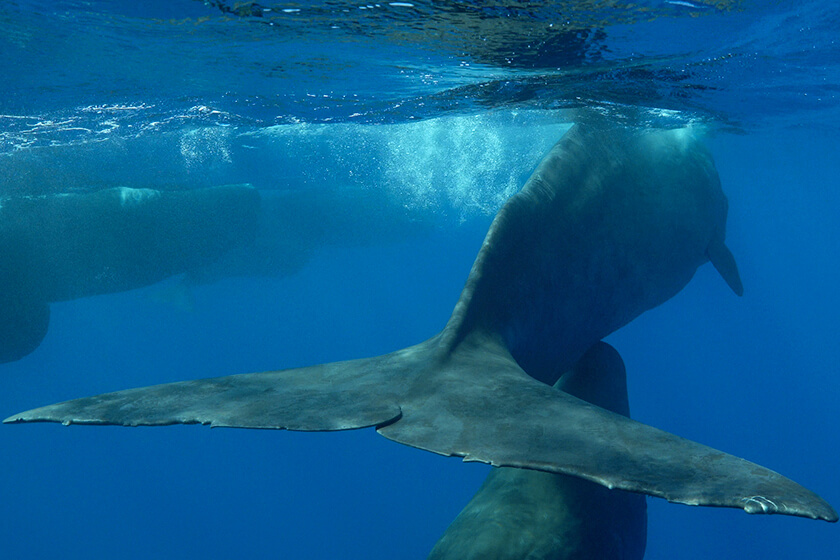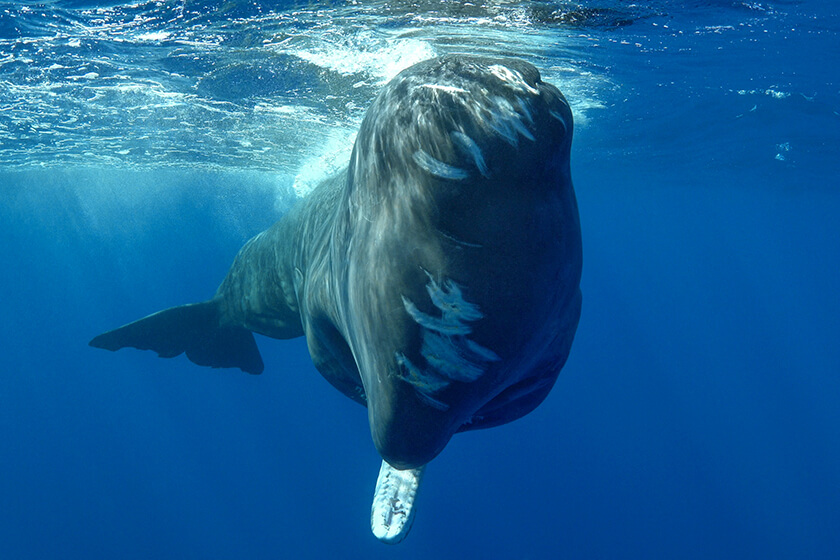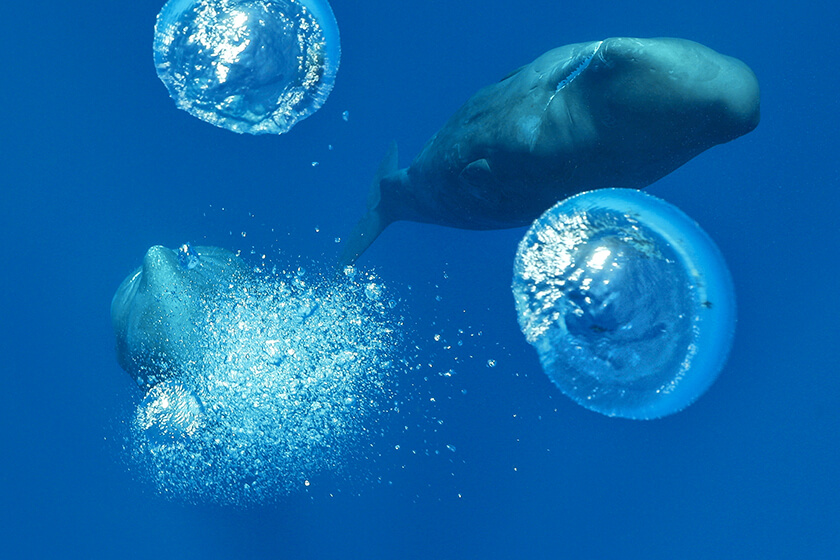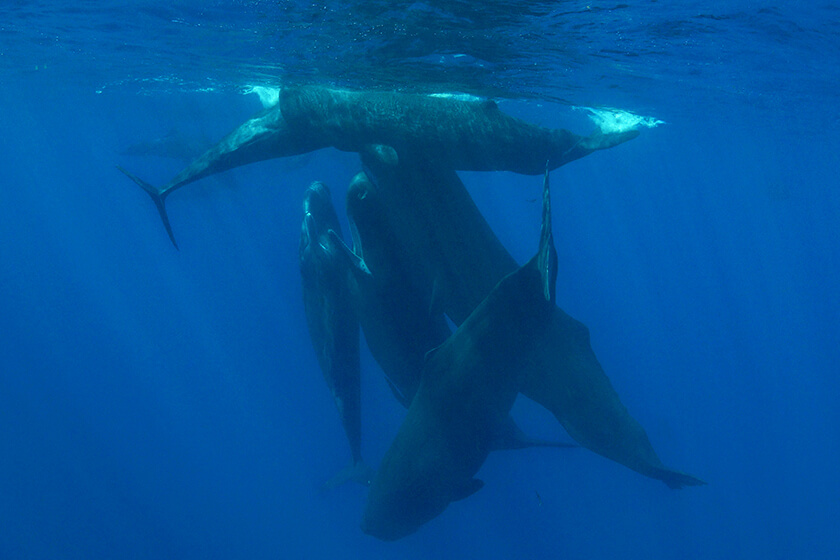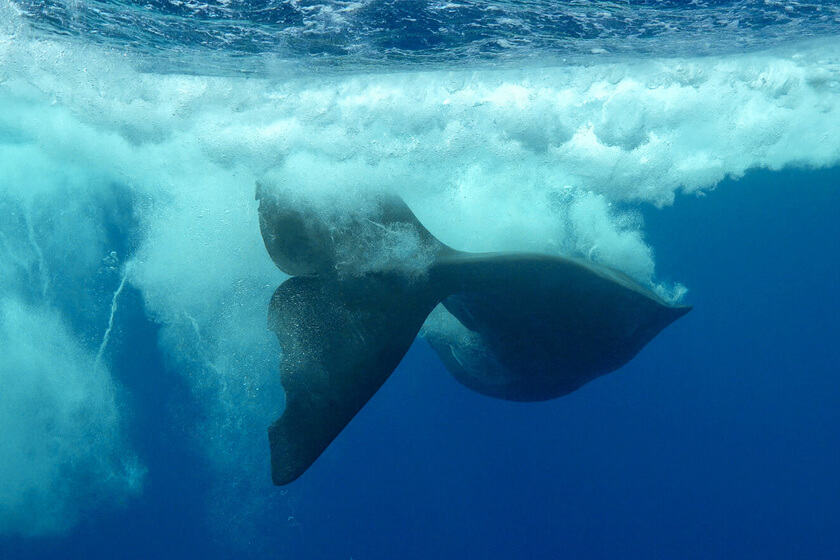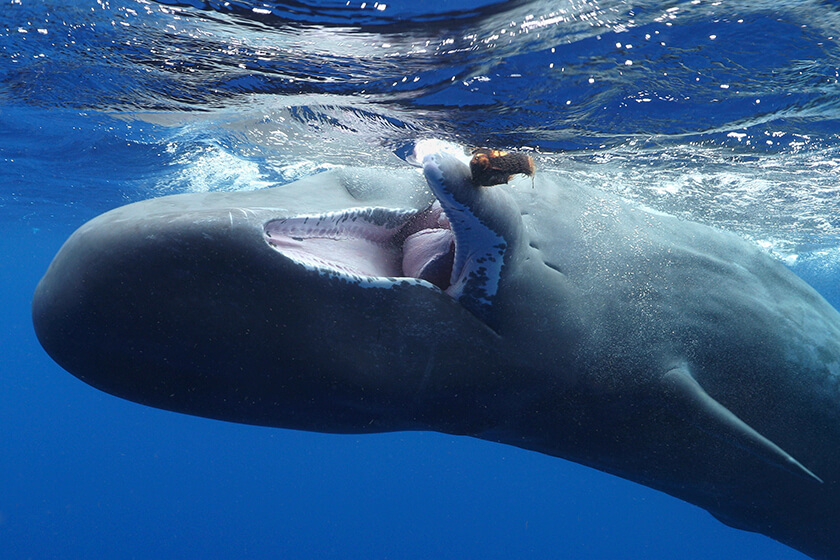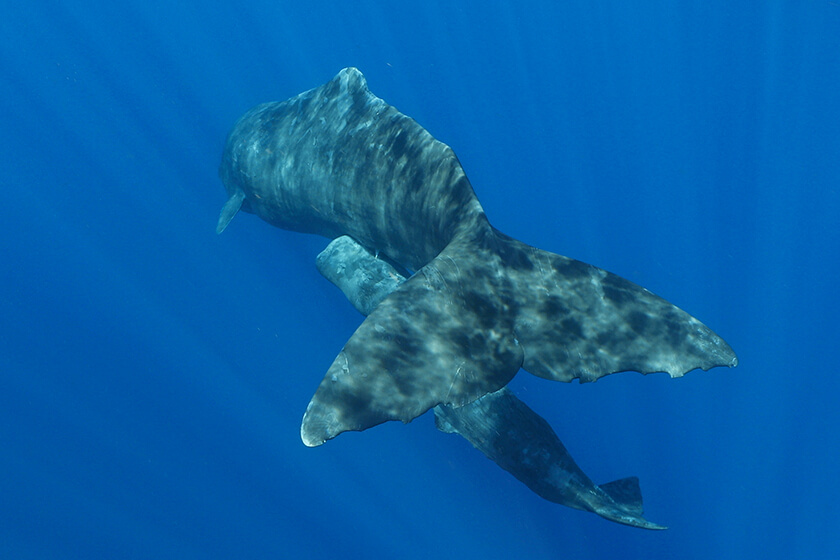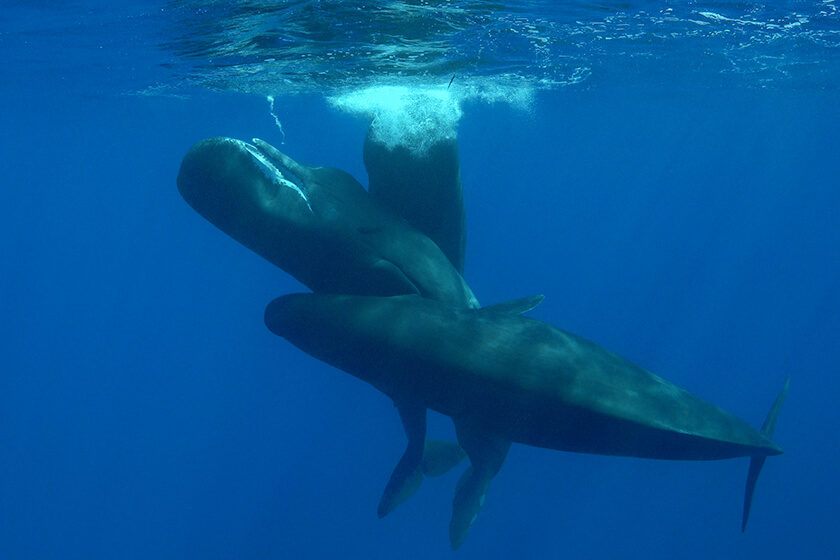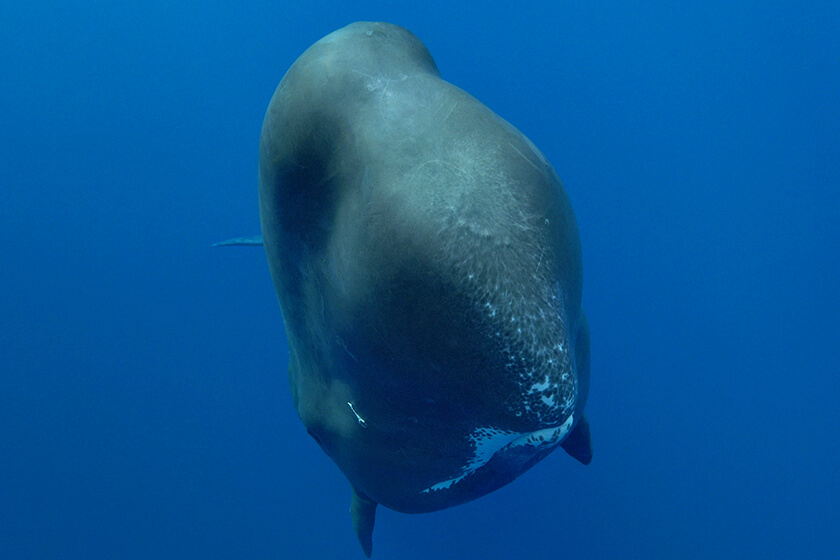Behaviors: Defensive Posturing
Sperm whales have very few predators due to their enormous size, however social groups containing females, calves and juvenile males are more vulnerable to predation than the massive adult males. Orcas pose the greatest natural threat to sperm whales, and will strategically hunt as a pod to separate weakened female adults or calves from the social groups.
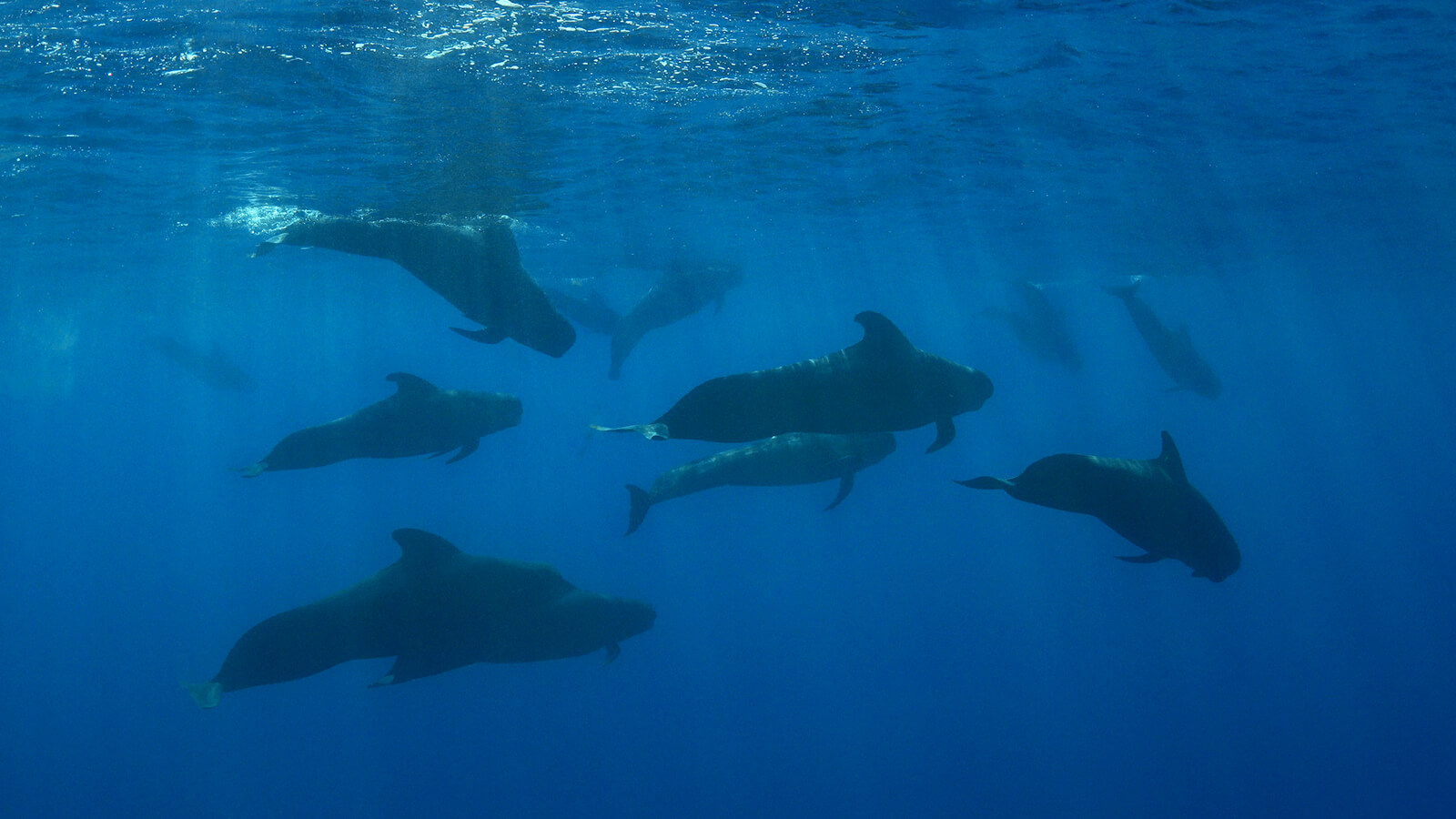
Pilot whales and false killer whales also hunt sperm whales but are less likely to kill them. Harassment by pods of pilot whales is relatively common in Dominica, theoretically because the whales compete for the same primary food source consisting of diamondback squid.
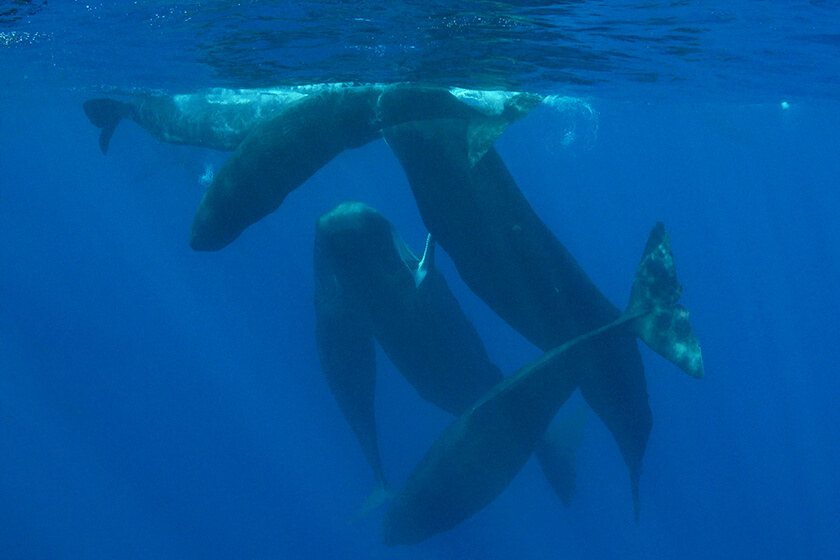
When threatened, sperm whale social units rely upon strength in numbers and if possible will temporarily join forces with other groups within their clan. They utilize a unique form of defensive posturing called a marguerite formation in order to withstand attacks. The whales form a large circle, positioning their heads towards the center with their flukes facing outward. Calves and more vulnerable individuals are placed on the inside of this circular grouping for protection.
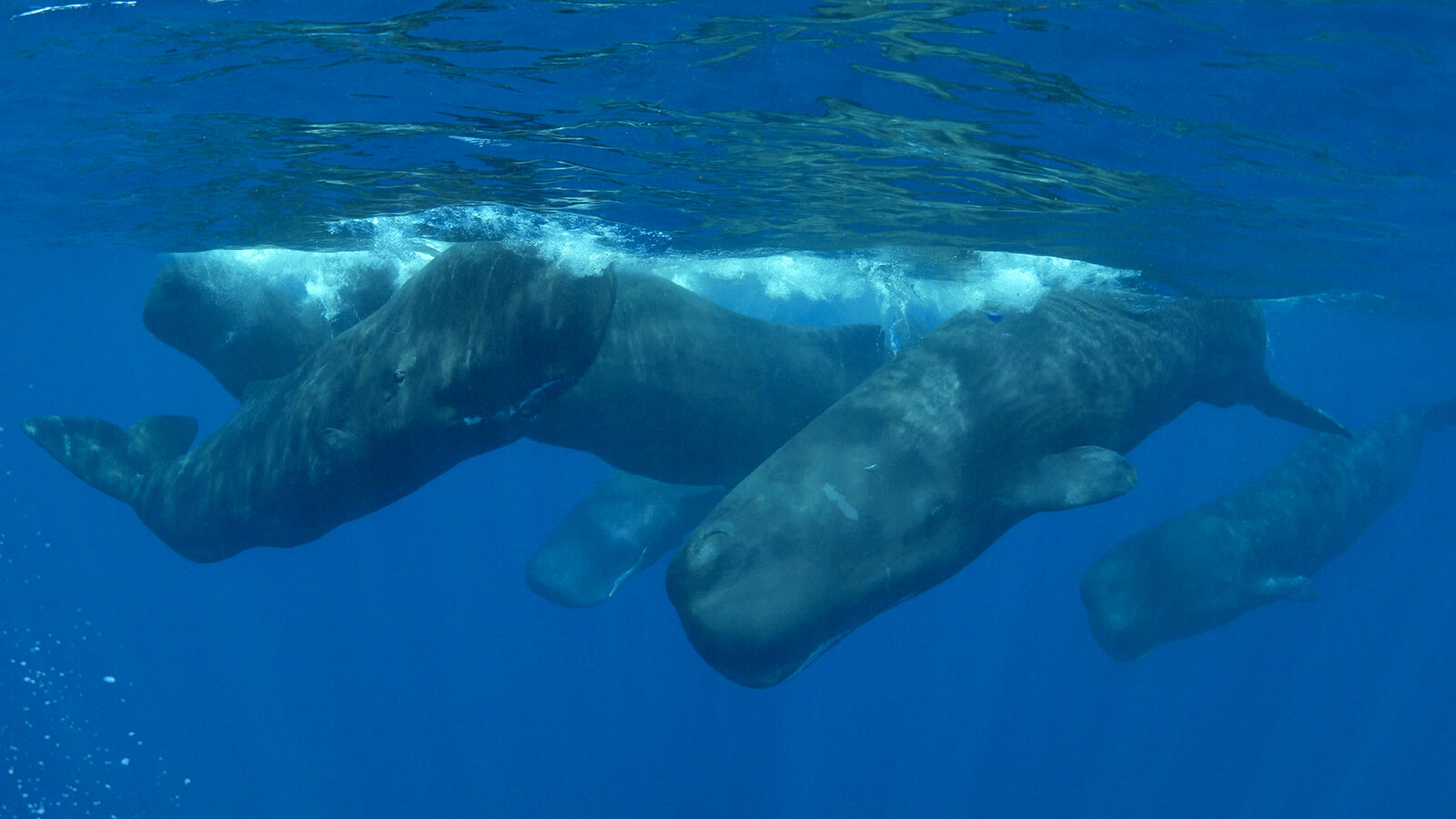
Sperm whales have several means of defending themselves. Their extremely powerful tail can be used as a formidable weapon. They are able to head-but an aggressor, and may also use a display of jaw snapping as a form of intimidation. While these deterrents may not kill their predators, it is extremely disadvantageous for orcas and other aggressors to become injured as it compromises their capacity to hunt. It is often in their best interests to avoid conflict and therefore minimize the risk of injury.
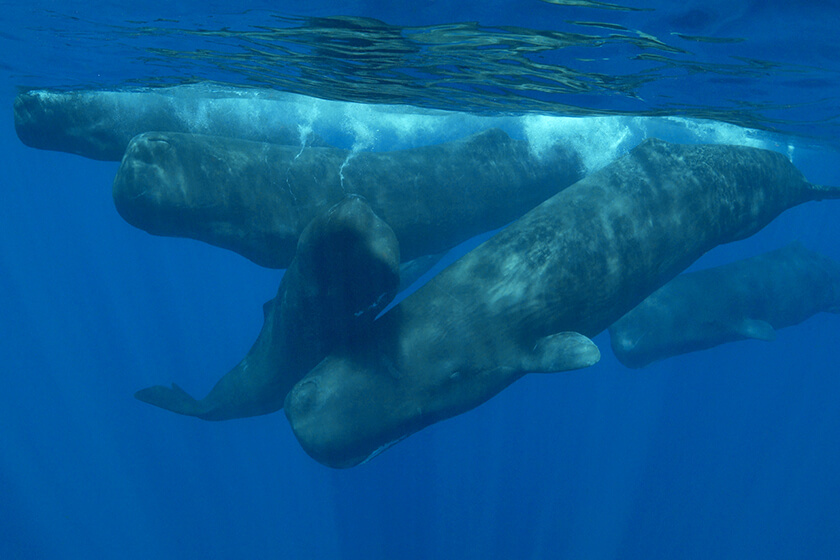
During our 2018 field session there were reports of orcas seen swimming along the coast of a nearby island. Over the next 24 hours we observed the convergence of several social units to form a larger combined group. We surmised that the sperm whales had intentionally increased the size of their collective group to present greater numbers and thus a more formidable force in the face of predators. The large combined group then deliberately made its way offshore and away from Dominica.

We also recorded a confluence of pilot whales when the orcas were sighted in the vicinity. While the sperm whales were in the process of congregating 10 miles from shore, the pilot whales gathered two miles off of the coast. The growing pod of pilot whales stayed in place for two hours circling in a wide arc and making shallow dives, and when their numbers reached several hundred they too left the area en masse.
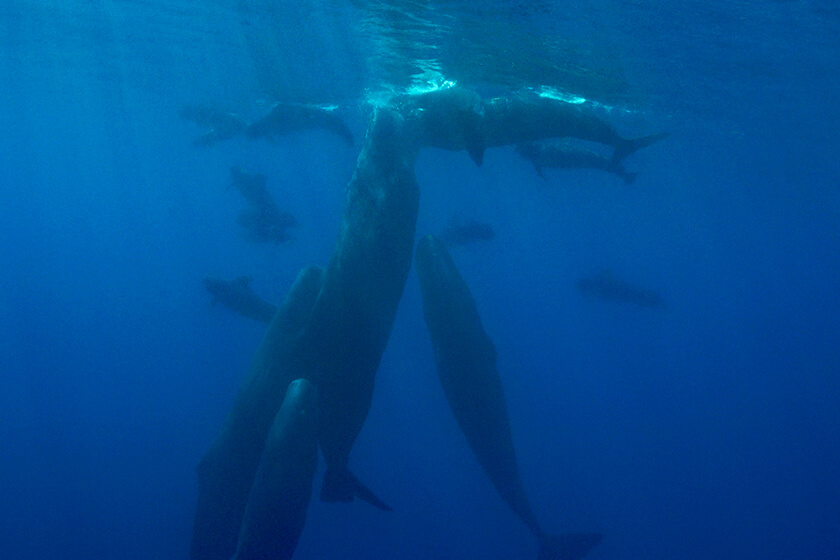
We had another opportunity to witness a group of sperm whales come together to form a loose marguerite formation when a pod of 50 – 60 pilot whales charged towards them. The pilot whales surrounded the social group on three sides for a brief period during which the sperm whales tightened their circle. It was soon evident that the pilots were behaving to intimidate rather than harass, and they soon swam away. We noticed that the sperm whales broke formation and began to swim, however the younger members of the unit stayed in closer proximity to adults than they had been previous to their being corralled.
We will continue to document this behavior should it occur in future field sessions.
